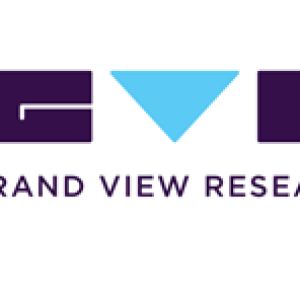Top Emerging Trends Of Lager Market Progress Forecast 2025Posted by Mrudula Anil Karmarkar on April 18th, 2022 The global lager market size is expected to reach USD 492.69 billion by 2025, according to a new report by Grand View Research, Inc., expanding at a CAGR of 4.3% over the forecast period. Consumption of premium beer in developed economies including Germany, U.K., and France is projected to exhibit significant growth owing to rising importance of bar culture on a domestic level. Moreover, consumers are changing their consumption habits and looking for innovative products with enhanced nutritional properties, which is expected to prompt the utility of lager. Asia Pacific is anticipated to witness substantial growth on account of improving standard of living and increasing number of alcohol consumers, especially in India and China. According to a report of World Health Organization (WHO), over the decade ending 2016, the annual alcohol consumption in India reached 5.7 liters per person, which is almost double as compared to the consumption in 2006. Furthermore, alcohol consumption in China stood up to 7 liters per person in 2016. These factors are expected to open up new avenues over the next few years. Major manufacturers are launching new products to cater to the increasing consumption in the market. For instance, in October 2018, Anheuser-Busch Companies, LLC launched an Italian craft lager in U.K. The product is sold at premium pubs, nightclubs, bars, and restaurants. In addition, in March 2016, Steinlager Tokyo Dry, a dry premium lager, was launched in New Zealand. The product has a combination of Japanese brewing mastery with quality raw ingredients of New Zealand. This premium beer immediately took the market by storm owing to its high quality and taste. These new product launches are expected to expand the scope of the lager in the foreseeable future. To Request Sample Copy of this report, click the link: https://www.grandviewresearch.com/industry-analysis/lager-market/request/rs1 Beer is commonly produced with four basic ingredients: water, malted cereals, yeast, and hops. These ingredients then undergo a fermentation process over a certain period of time. Beers are largely categorized into two types: ale and lager. The basic difference between both types of beer is the yeast that is used for fermentation. The selection of the yeast is based on the fermentation temperature of the beer. Ales are generally fermented at moderate temperatures (20 to 22 °C), whereas fermentation of lagers takes place at cooler temperatures (7 to 13 °C). The lower temperature slowdowns yeast activity and provide the necessary maturation time. Further key findings from the study suggest:
Lager is predominantly consumed in bars, restaurants, hotels, wine shops, nightclubs, supermarkets, and online retails. Furthermore, major manufacturers are introducing new flavors such as tequila, apple, cheese, blueberry, chocolate, and lemons. However, increasing penetration of available substitutes such as vodka, whiskey, rum, and gin, coupled with rising demand for other non-alcoholic substitutes, including energy drinks and carbonated drinks, is expected to have a negative impact on the market growth. Increasing awareness regarding health benefits associated with the product will boost the market growth. Beer has a number of vitamins, proteins, and natural antioxidants with low calories, carbohydrates, and no fat or cholesterol. These nutritional properties help to prevent cardiovascular diseases and support muscle recovery. In addition, they help in improving the cholesterol level and increasing HDL in the body. According to the World Health Organization (WHO), 17.9 million die every year due to cardiovascular diseases (CVDs) globally. Increasing health issues are expected to promote the consumption of the lager over the forecast period. Manufacturers are adopting several strategies including mergers and acquisitions, capacity expansion, technological innovation, and product innovation. Key manufacturers of the industry are Heineken N.V., Carlsberg Group, Anheuser-Busch Companies, LLC, China Resources Snow Breweries Limited, Diageo, Molson Coors Brewing Company, Tsingtao Brewery Company Limited, ASAHI BREWERIES, LTD., Castel Group, and Kirin Brewery Company. Grand View Research has segmented the global lager market on the basis of product, distribution channel: Lager Product Outlook (Revenue, USD Billion, 2015 - 2025)
Lager Distribution Channel Outlook (Revenue, USD Billion, 2015 - 2025)
Like it? Share it!More by this author |


